Who Controls the User Experience? AMD’s Carrizo Thoroughly Tested
by Ian Cutress on February 4, 2016 8:00 AM ESTHow Hot is too Hot? Temperatures and Thermal Results
In a normal desktop computer, the goal is to complete the set of instructions the fastest and be able to dissipate the energy. With a mobile device however, where energy consumption as well as heat dissipation are both factors, it is no longer simply a race to complete the task the fastest, due to the fact that the efficiency of the task also comes in to play. There are some items that can be worked on over time at a more efficient performance per watt ratio, and not everything has to be done at lightning speed. There still comes a time when a program needs responsiveness, and the system is happy to pay an efficiency penalty in order to do so (lower performance/watt, but faster to react). With longer or sustained workloads, dealing with the excess energy lost as heat becomes a big factor, and there are many ways to deal with it.
Some systems are big, metallic, heavy and can dissipate a lot of heat. Some are plastic and fanless, and get warm very quickly. As we saw in our ‘OEM Dilemma’ piece with Core M in 2015, even with the best processor you can buy with an unlimited budget, if it doesn’t have the heat dissipation characteristics (or design), it will perform very badly. Not only does the OEM have to decide how good/expensive that has to be, but other factors such as processor temperature and skin temperature influence where the thermal ceiling is, because if the system hits the ceiling then it has to reduce both frequency and voltage (DVFS, dynamic voltage/frequency scaling) to reduce power output. This reduces performance as well, and can cause the system to have bad results. Some systems can be quite strict with DVFS, going low at the first sign of trouble, whereas others will try and hover around the skin temperature.
So the key metrics are:
- Skin Temperature Limit, set by OEM mainly for comfort
- Heat dissipation design and characteristics, i.e. plastic or metallic
- How aggressive the DVFS system is.
A Quick Look at Rocket League
As part of our testing, we were able to use a FLIR thermal camera for a couple of days and take some recordings. For this, I chose to up end the laptop and face the camera on the bottom of each laptop. With this in place, I ran our Rocket League benchmark which has a variable CPU/GPU workload and is indicative of how a system with a good integrated graphics solution might be used. The videos are below, with the temperature scale in each set from 20 C to 55 C:
Out of the videos, I took two sets of images – one after 10 minutes, and one at the end showing the hot spots. Starting with the final shots, we had the following:
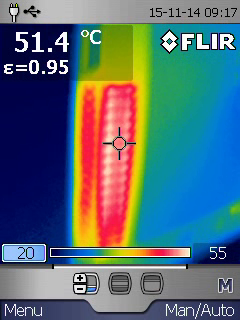

HP Elitebook 745 G2 and HP Elitebook 745 G3
If we take the two HP Elitebook 745s, with the G2 (Kaveri) on the left and the G3 (Carrizo) on the right, the hotspot for both was the vent on the left hand side. As we can see, the G2 part (either by virtue of firmware or the extra 4W in TDP) gives 51ºC compared to 46ºC in the G3. It is also fairly clear that the G2 temperature hotspot is highly spread across the region, whereas the G3’s is more localized.
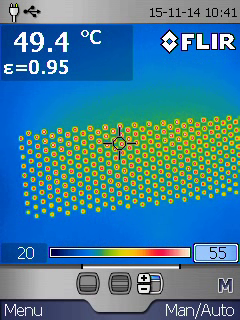
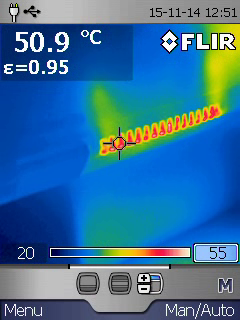

HP Pavilion, Toshiba Satellite and Lenovo Y700
From left to right, here we have the HP Pavilion, Toshiba Satellite and the Lenovo Y700. Both the Pavilion and the Toshiba are between 49-51ºC with the temperature spreading out from the exhaust. Arguably the vent in the Toshiba model is producing a more uncomfortable scenario here. On the far right is the Lenovo Y700, and by virtue of being built to dissipate a 35W APU and similar TDP external graphics card, it barely gets warm at the worst vent. This is shown in the 10 minute shots:
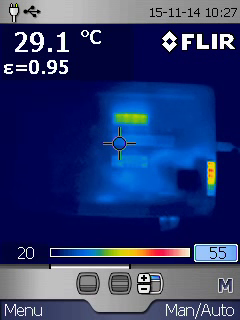
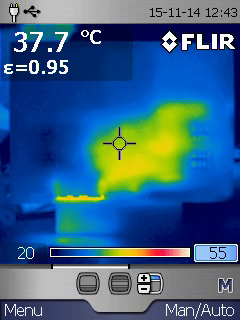

HP Pavilion, Toshiba Satellite and Lenovo Y700
Again, left to right is the HP Pavilion, Toshiba Satellite and the Lenovo Y700. For the Lenovo, this shot is actually taken at 15 minutes and you can barely see much above room temperature. The HP Pavilion on the left has two very localized spots, showing the two vents, and the middle Toshiba has very good or poor heat management, depending on how you look at it. The excess heat is definitely finding its way around a large portion of the base of the laptop, which is good to prevent heat soak, but the problem is that the laptop design doesn’t seem to be getting rid of it like the other two devices. This is perhaps where having a slightly louder but more powerful fan could help, compared to one that won’t push as much air through the device.
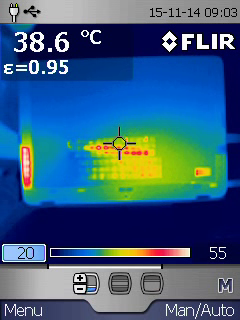
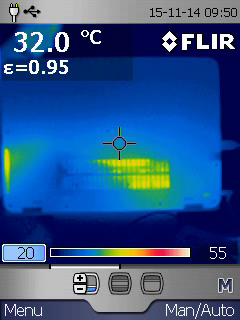
HP Elitebook 745 G2 and HP Elitebook 745 G3
If we go back to the HP Elitebooks (G2 with Kaveri on the left, G3 with Carrizo on the right) we can see a similar situation at the 10 minute mark. The G2 Kaveri system is experiencing a lot of heat soak around the vents, spreading around the bottom of the laptop. The Carrizo system by comparison is on the same road, but much further back. The vents are clearly where the temperature rises the most, which might make it uncomfortable to use, but the Carrizo is certainly doing a better job here.
That’s all well and good for temperature we might feel with the device on the lap, the limiting factor to performance is when we hit that temperature ceiling. We profiled several benchmarks and their temperature characteristics for each of the laptops.
#1: The HP Elitebook 745 G2 (Kaveri, A10 PRO-7350B, 19W)
From the results, it would seem that the G2 has two different temperature modes. In a mode that requires the processing power but is perhaps a trivial set of calculations, the system will set a 60ºC limit:
But when the calculations get more complex and vectorizable, for example transcoding video or ray-tracing, the limit will be raised nearer 70ºC
Even with these limits, in each situation it seems the temperature is actually achieved very quickly, perhaps due to the heat soak as seen in the images above.
#2: The HP Elitebook 745 G3 (Carrizo, PRO A12-8800B, 15W)
While the G3 has an identical design to the G2, we saw above that the Carrizo would seem to have less of an issue with thermal throttling if all was equal. By our results, the footing does seem equal more or less, but the G3 actually seems to have more stringent requirements as to what constitutes as ‘heavy and complex’ to open up the limit beyond 60ºC. So we end up with great graphics like these showing where the temperature limit is kicking in either once with POV-Ray or repeatedly in 3DPM:
But hand it over to PCMark08 and it seems to be all over the place:
With PCMark08 there does seem to be an aim for 55C, but at certain points the system is happy to let the heat soak a little bit before kicking in either the fans or a lower DVFS setting.
#3: The Toshiba Satellite E45DW-C4210 (Carrizo, FX-8800P, 15W)
Based on previous experiences with Toshiba devices, you would forgive me for expecting there to be some issues when it came to temperature related worries. The thermal images above, showing heat soak over the rear of the device, was also poignant. Nonetheless, the figures do the talking, and it turns out that the Toshiba is very aggressive when it comes to temperature limits. There seems to be a blanket 60ºC temperature limit in almost all situations:
There are many occasions when the thermal limit will kick off and a program will let the system rise up a few degrees (particularly in bursty loads) but the system very quickly engages back to get to 60ºC. The only problem the Toshiba has is that the system already seems to be hovering around that temperature before work starts, which might explain why the high frequency modes rarely kick in:
#4: The HP Pavilion 17z-g100 (Carrizo, A10-8700P, 15W)
The HP Pavilion takes the medal for being the biggest device out of the bunch with the lowest frequency Carrizo APU, which usually makes for a good combination of more turbo modes more often without the need to throttle. However, looking at the results, this is far from the case.
The HP Pavilion is actually more restrictive than the previous three already described – no matter what the benchmark, the limit seems to be 55ºC with next to zero ifs or buts.
Even POV-Ray and PCMark08 get struck down immediately or barely even get to 55ºC in the first place. If we look at the frequency histograms, this shows a lot – the Pavilion is rated for a turbo mode of 3.2 GHz, but you would be lucky to even catch a glimmer beyond PCMark08:
All the other benchmarks essentially have 2300 MHz as their regular frequency and mostly clock down to 2100 MHz in temperature dependent situations. This is an odd one – the only compensation one would get out of this is extended battery life (while work isn’t being done) and a less uncomfortable lap (if you happen to be using a 17-inch device on your lap).
#5: The Lenovo Y700 (Carrizo, FX-8800P, 35W) + R9 385MX
Despite the Lenovo being the most powerful and power hungry system here, it probably has the easiest ride on paper. The system design has to be able to get rid of heat when both the APU and GPU are running full steam, which is arguably up to 100W of cooling power. So putting the system through a few tests should be easy enough to invoke the highest frequencies, right?
In practically every benchmark, the system hummed along at 3400 MHz, the top turbo mode. This gives obvious advantages for benchmarking for sure. In most situations the temperature feels unrestrained in the easier benchmarks:
But in PCMark08, it does seem to jump around a fair bit. This means we get a small amount of lower frequencies:
However it is actually the WinRAR test that has most concern. The system keeps the temperature low, pretty much below 40 all the time. This opens up a lot of lower frequencies as a result. Part of this might be to do with memory accesses, as WinRAR is a heavy test on the memory bandwidth.


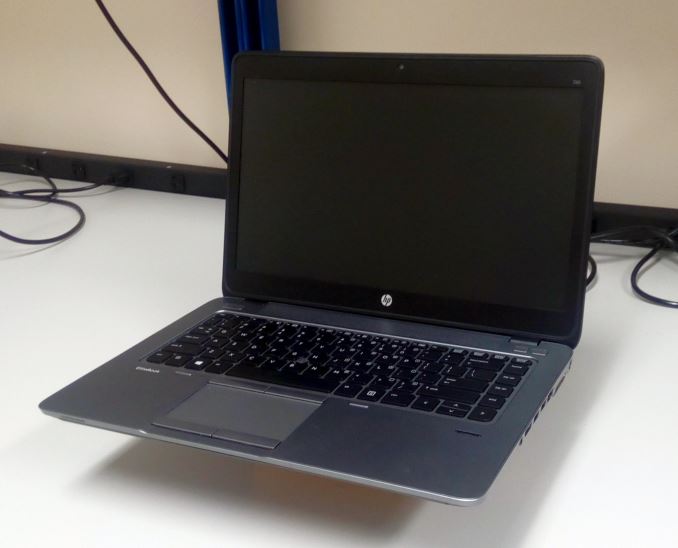
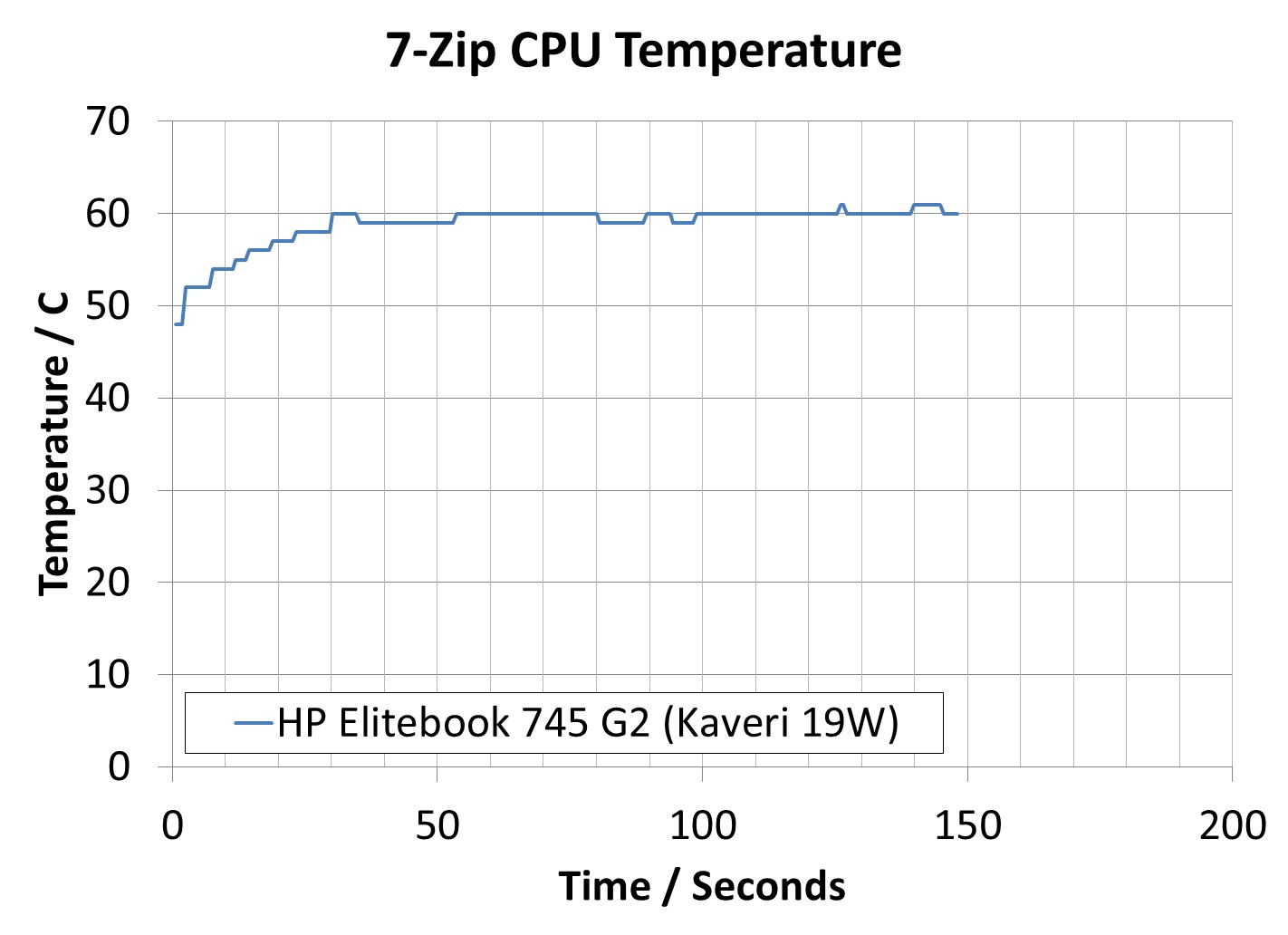


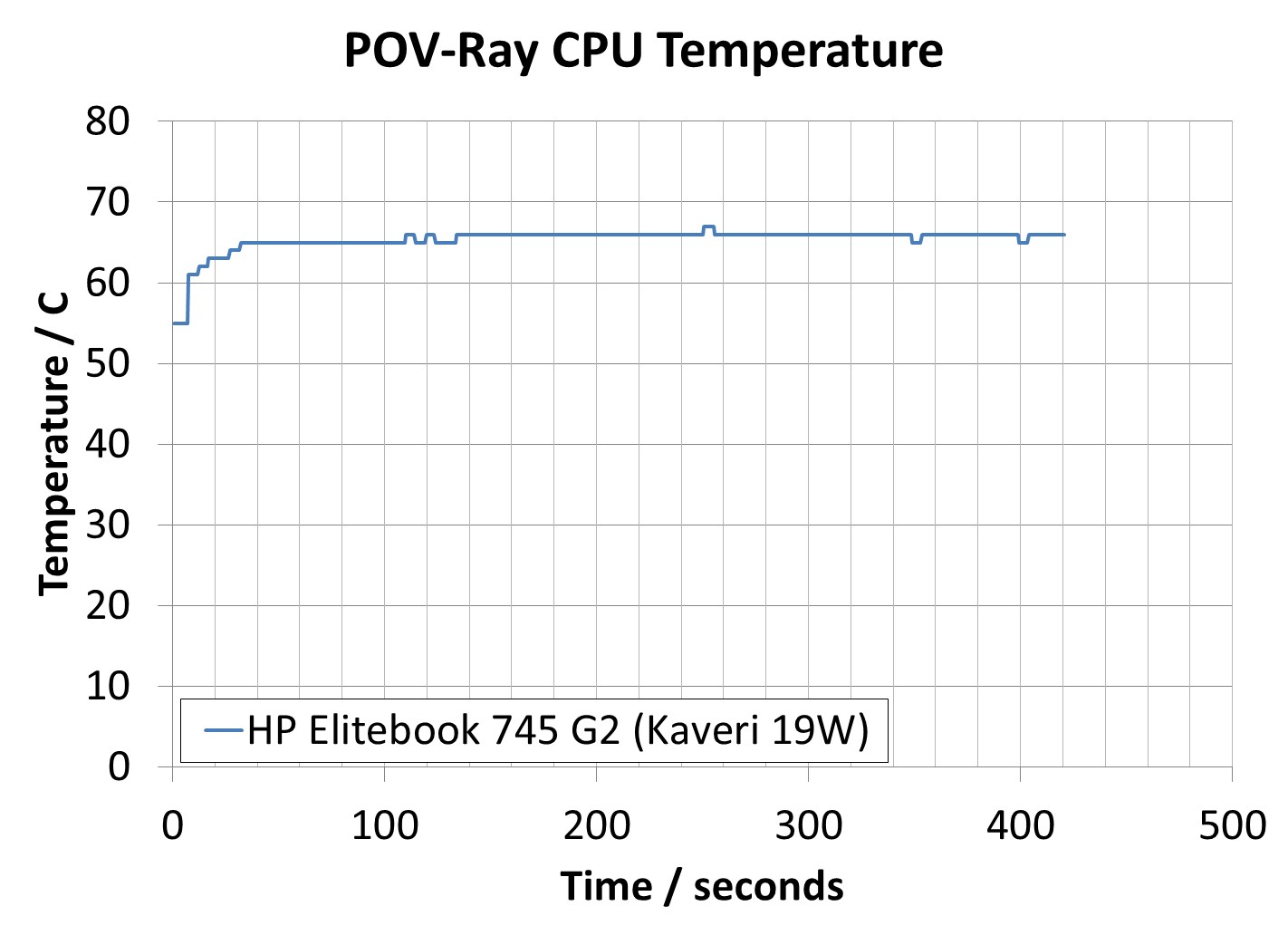
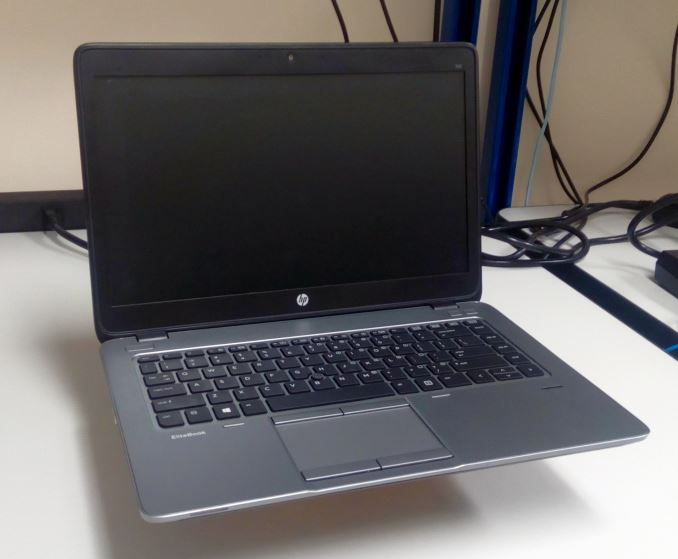
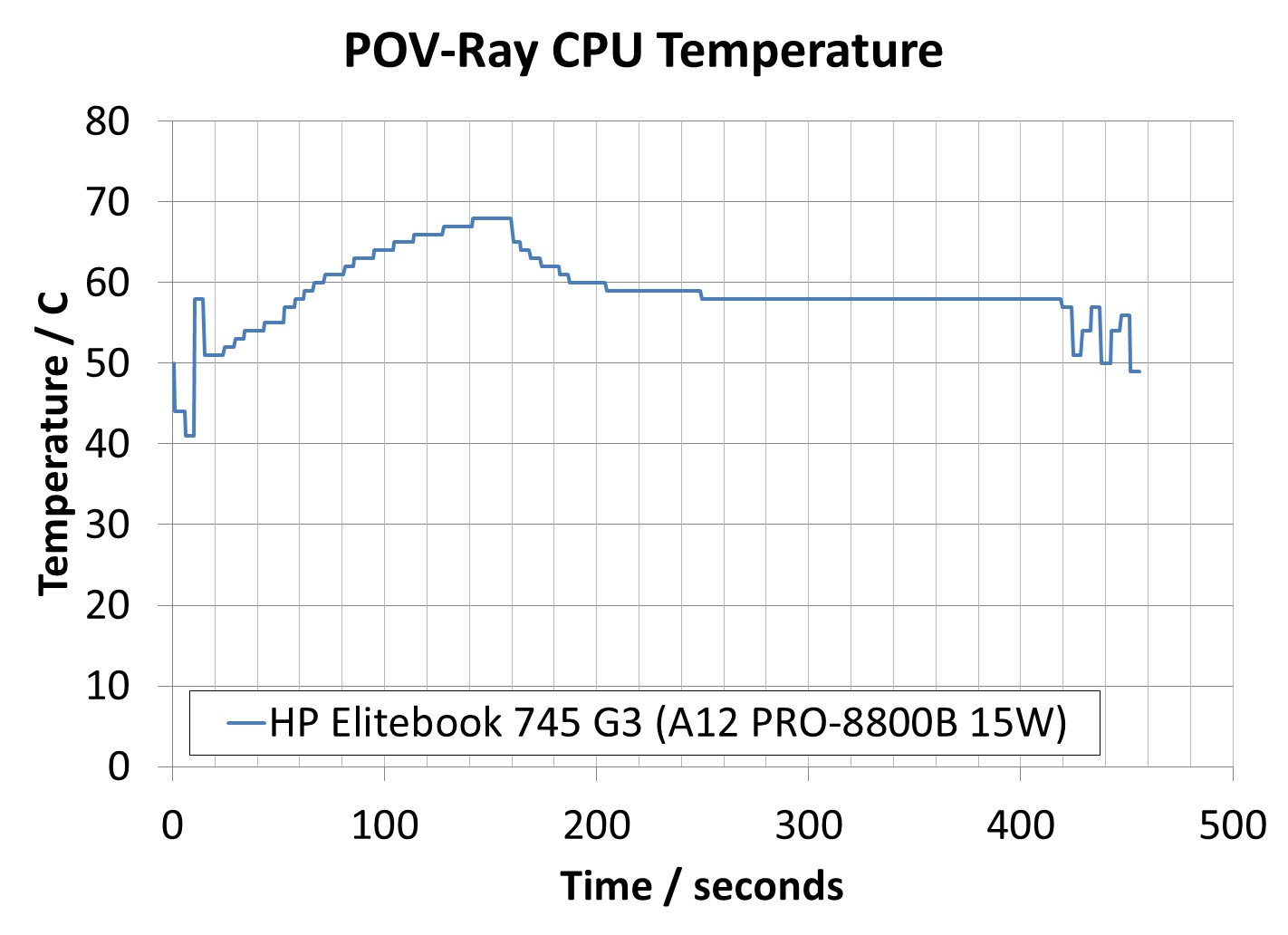
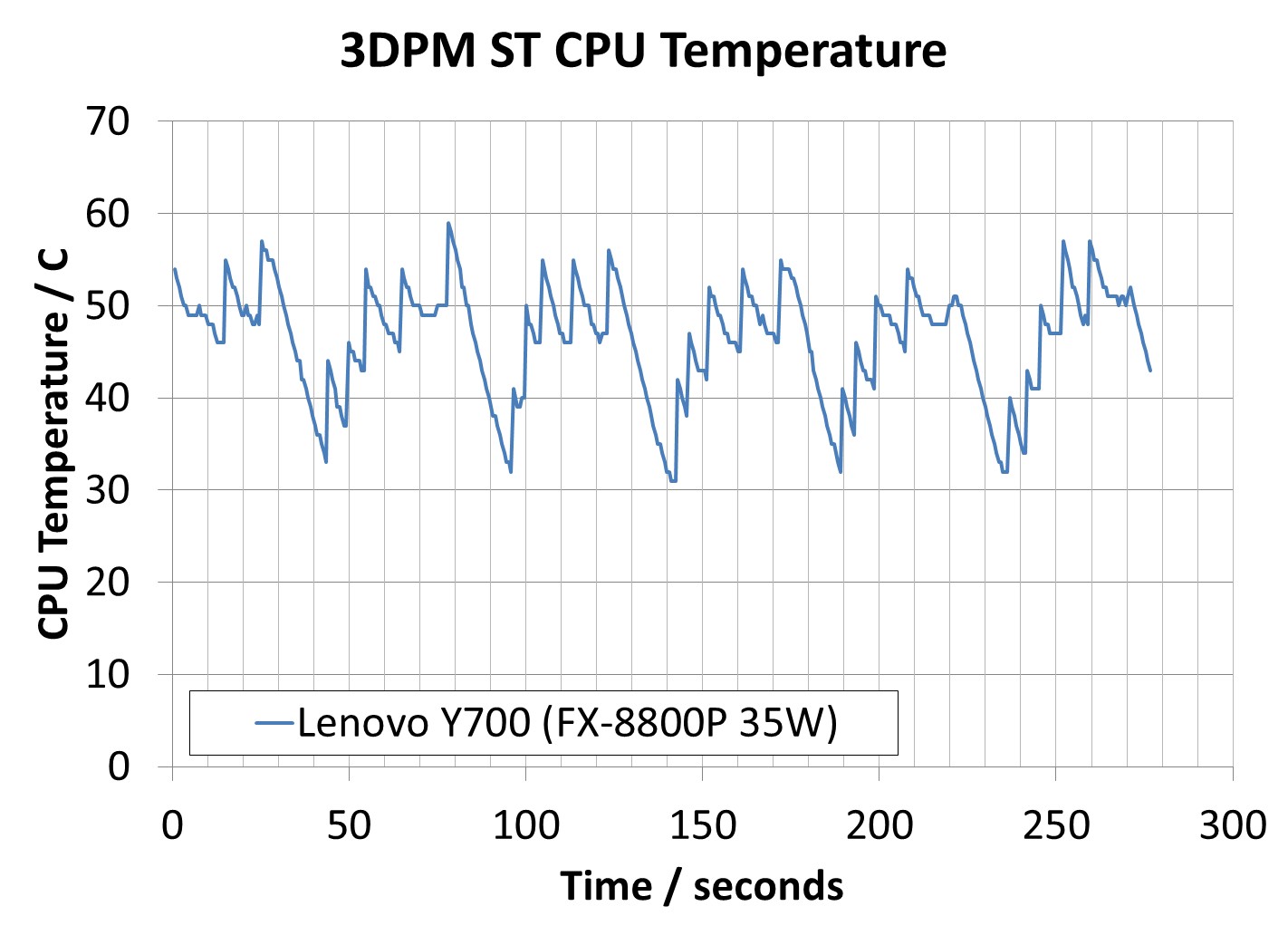
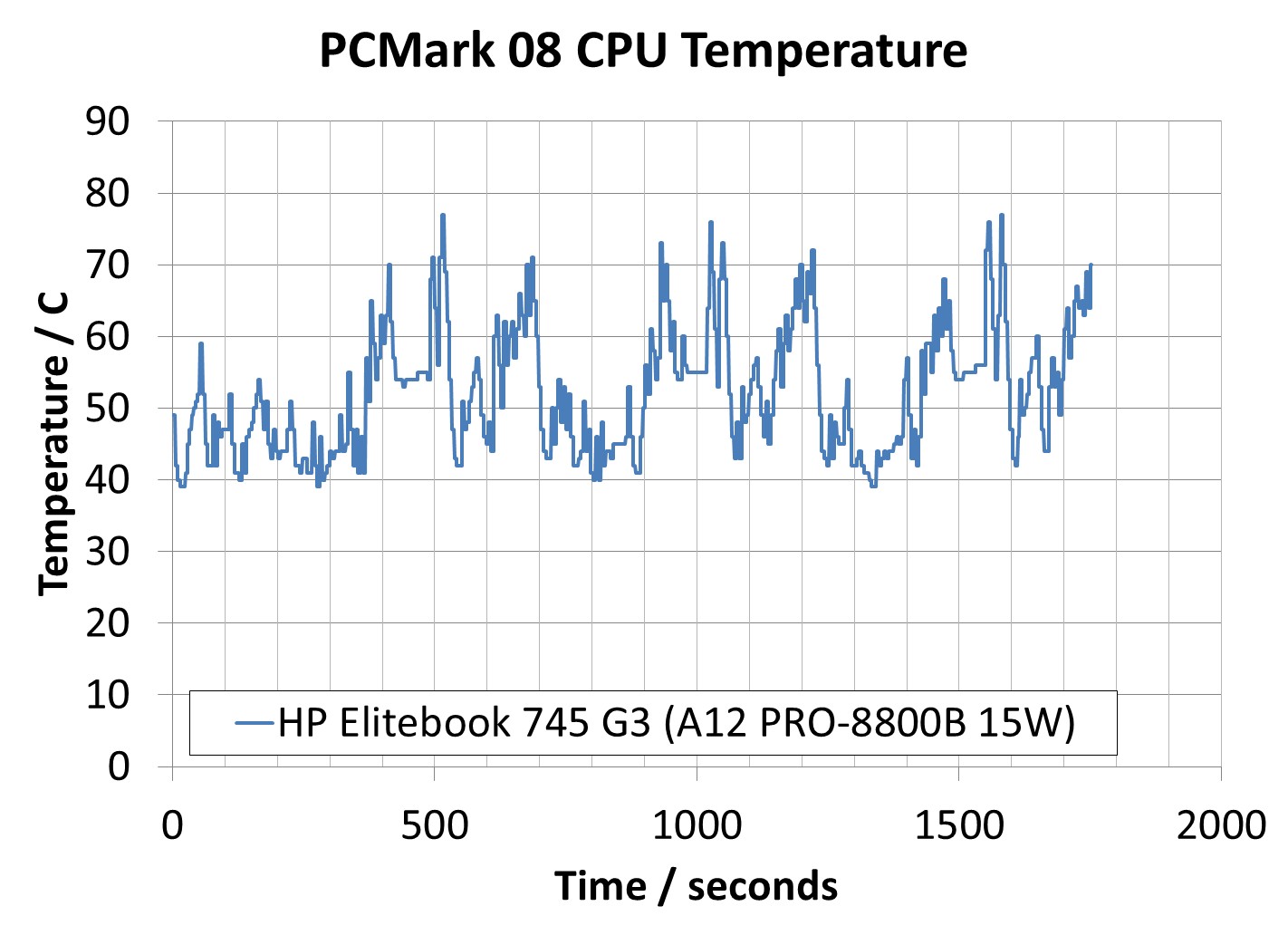
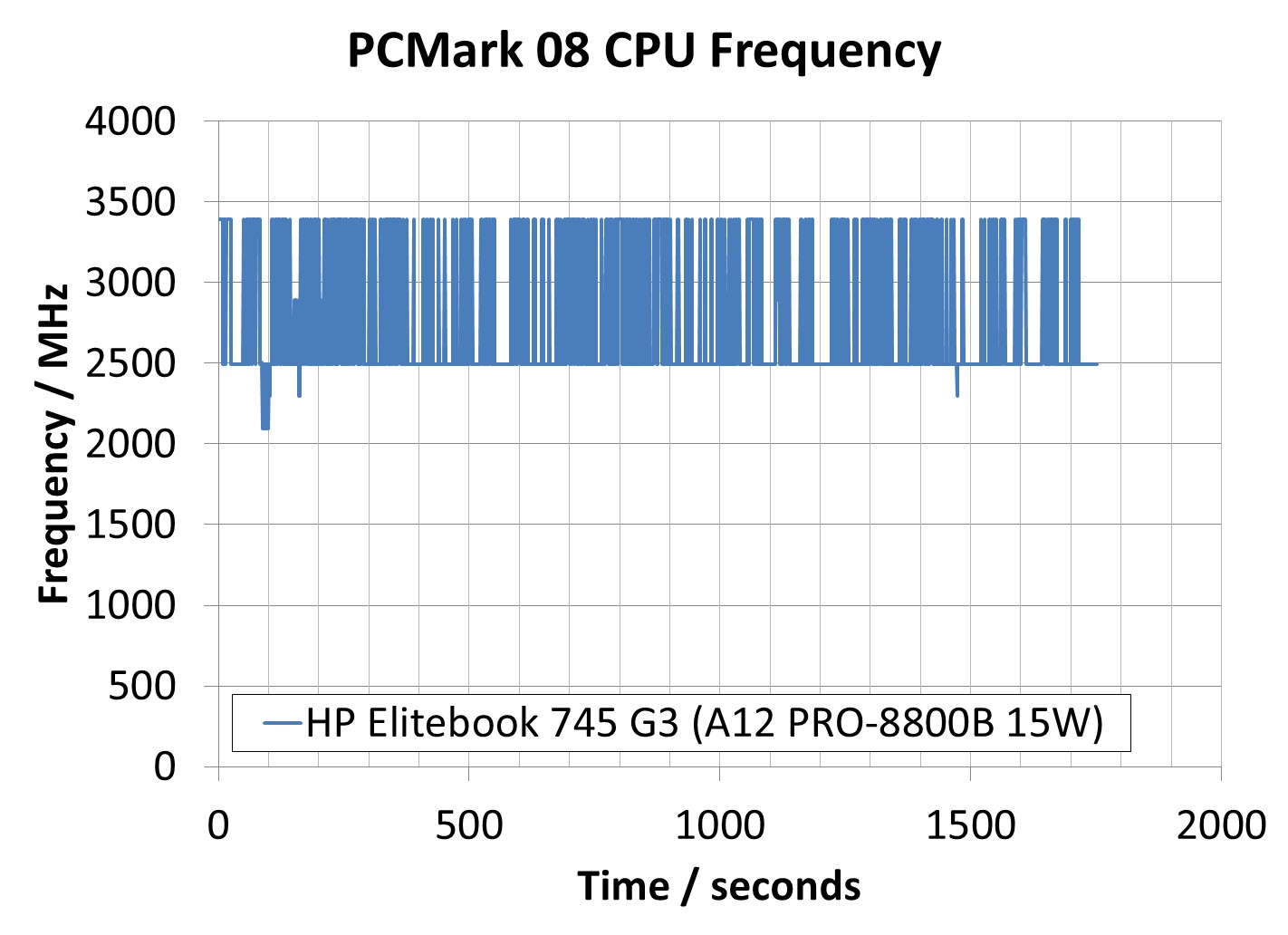
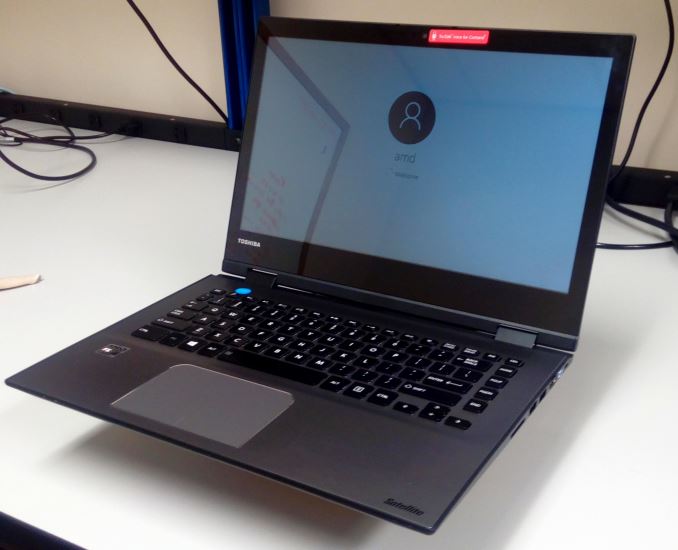
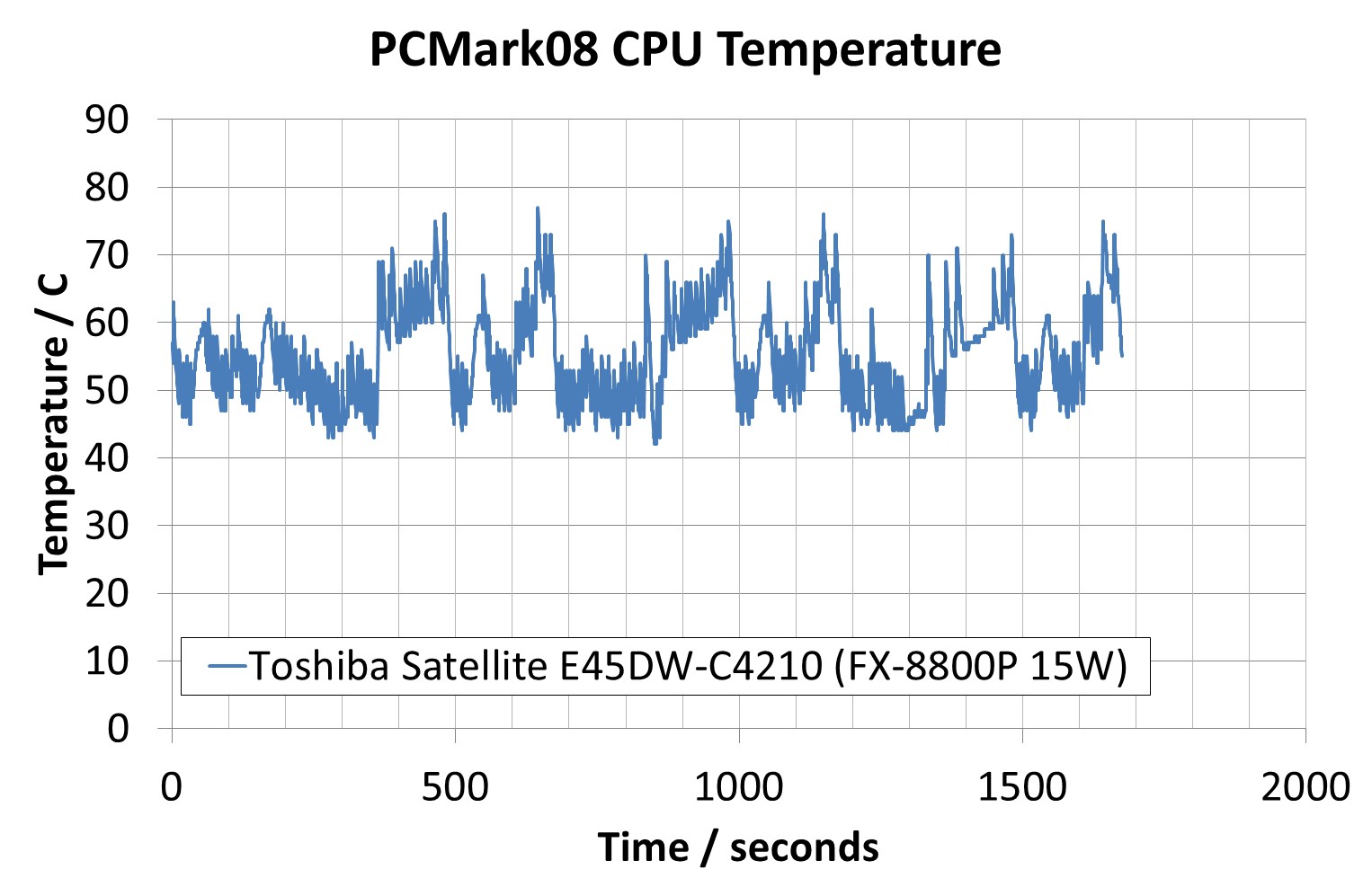

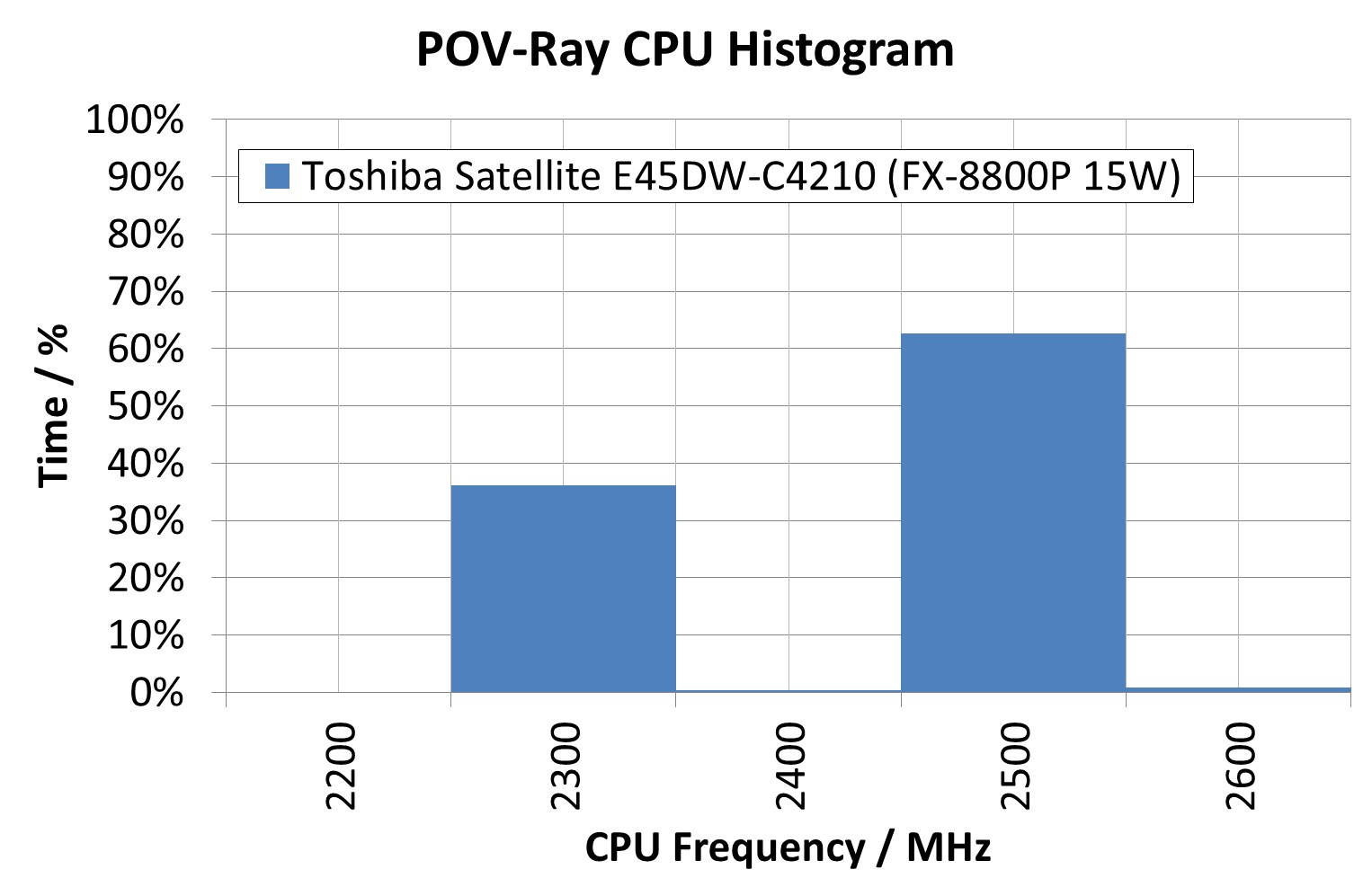
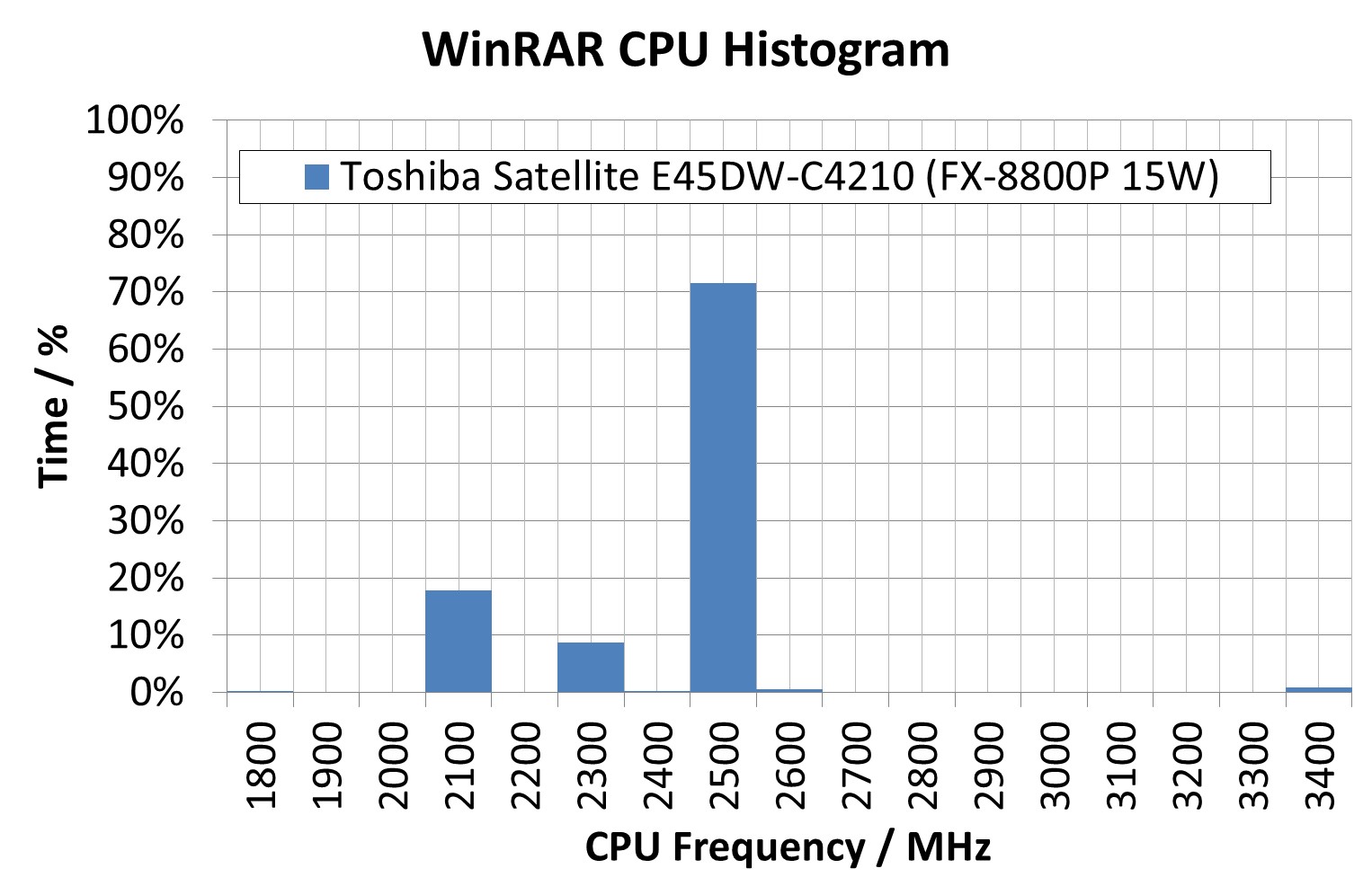
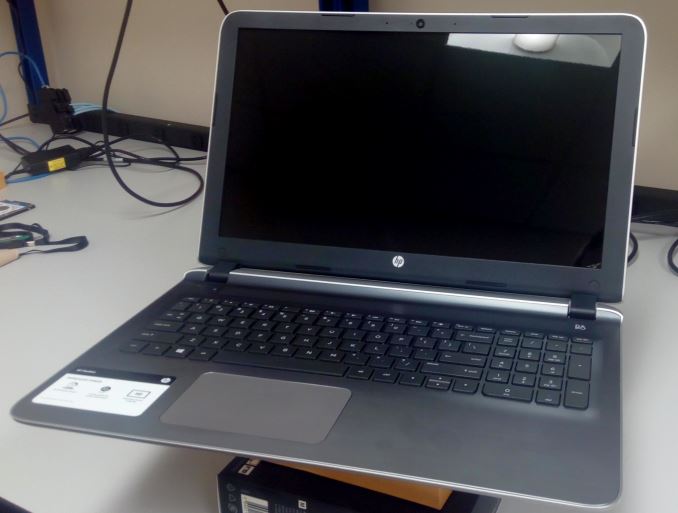
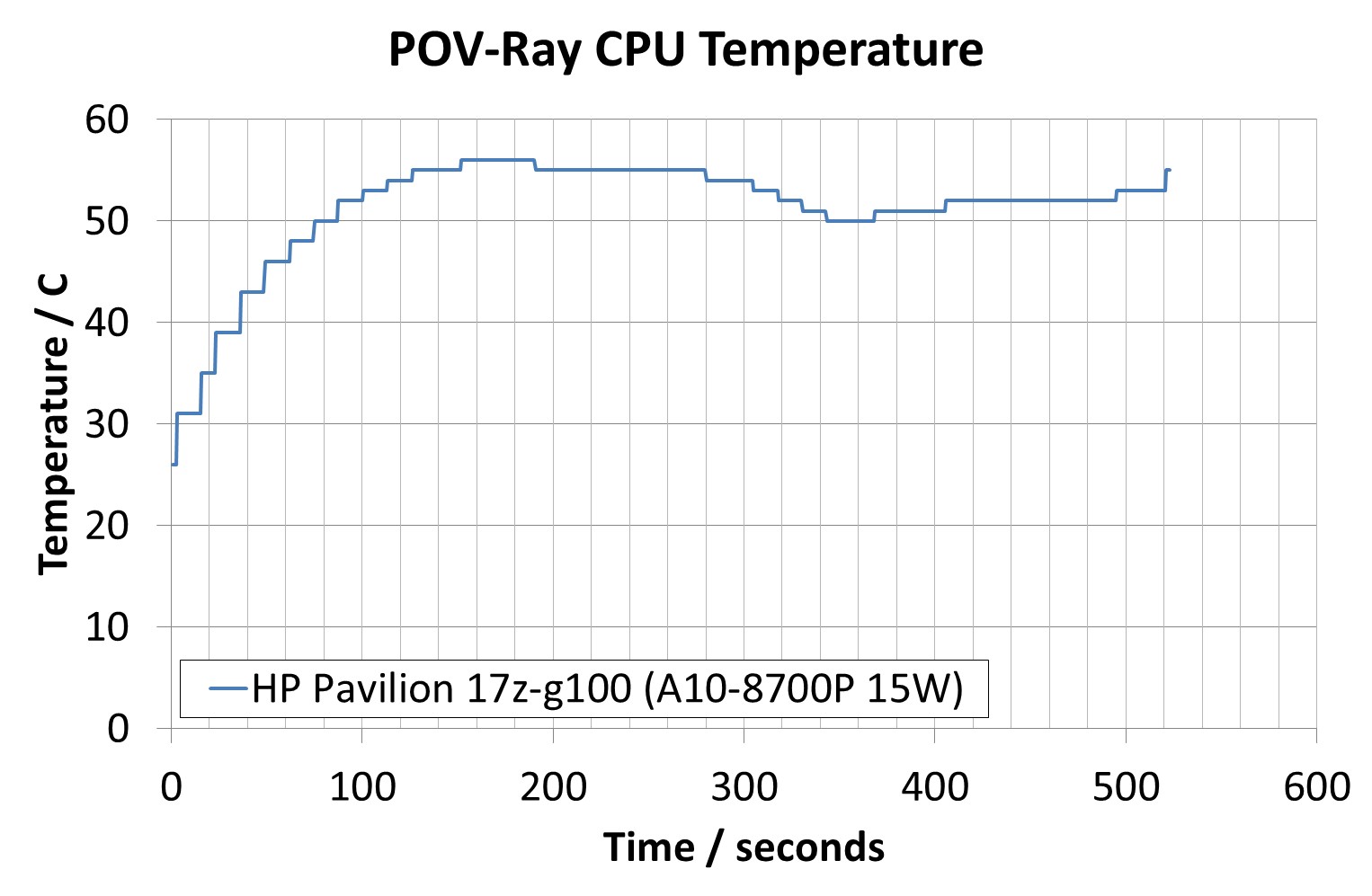

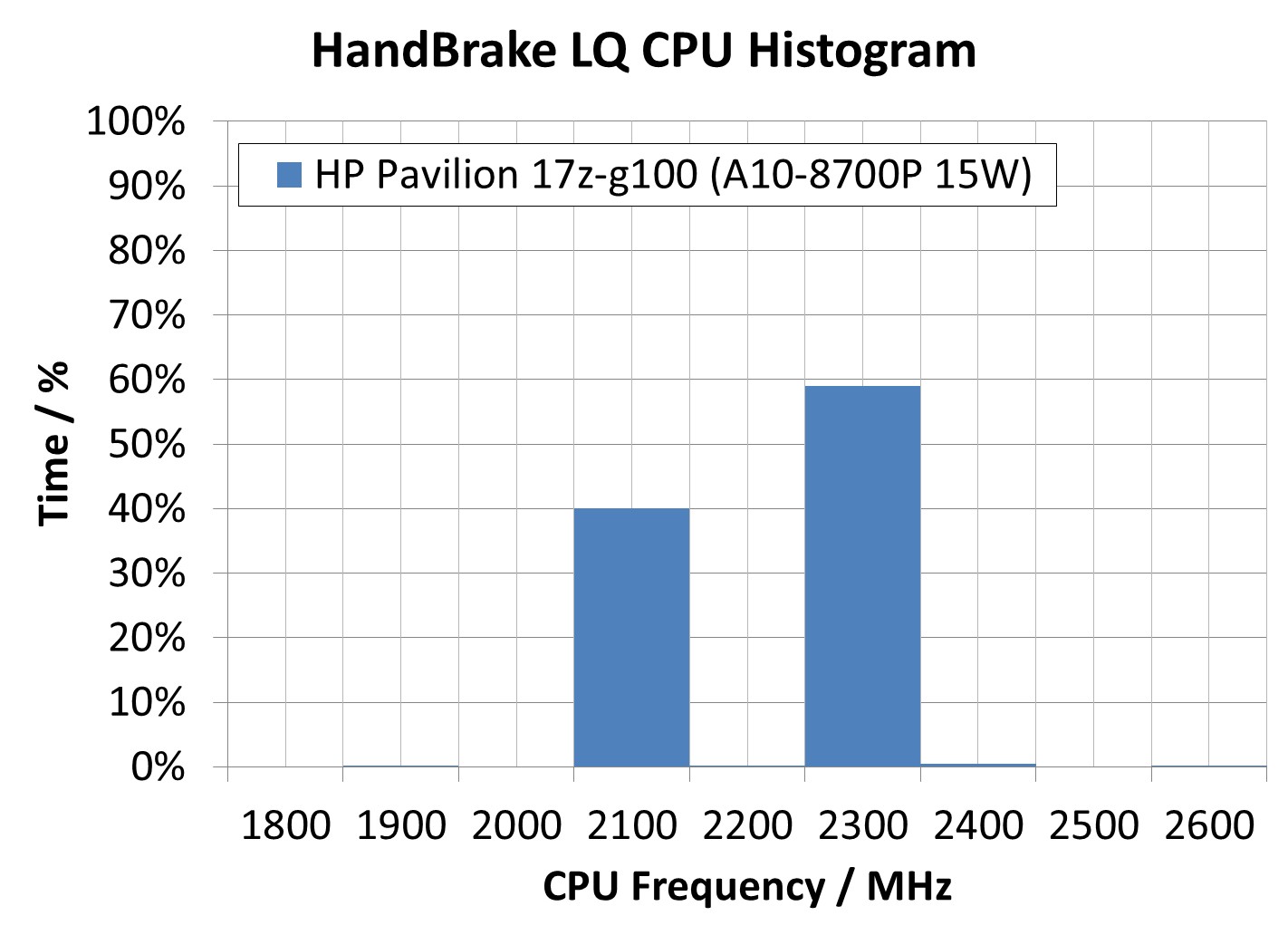
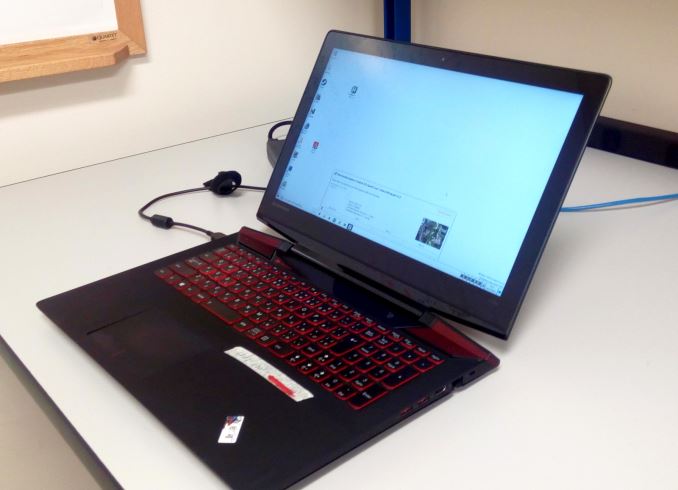

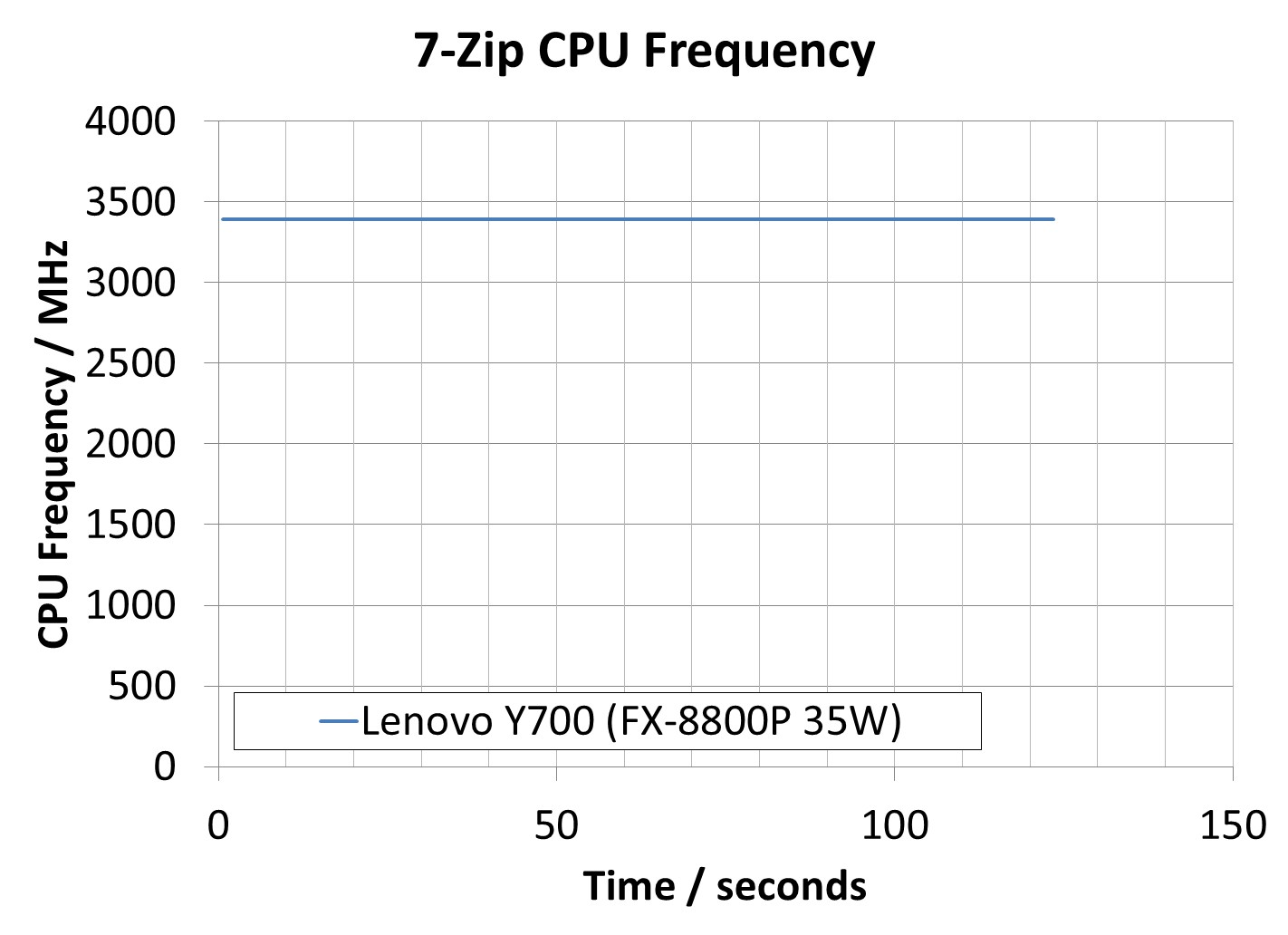

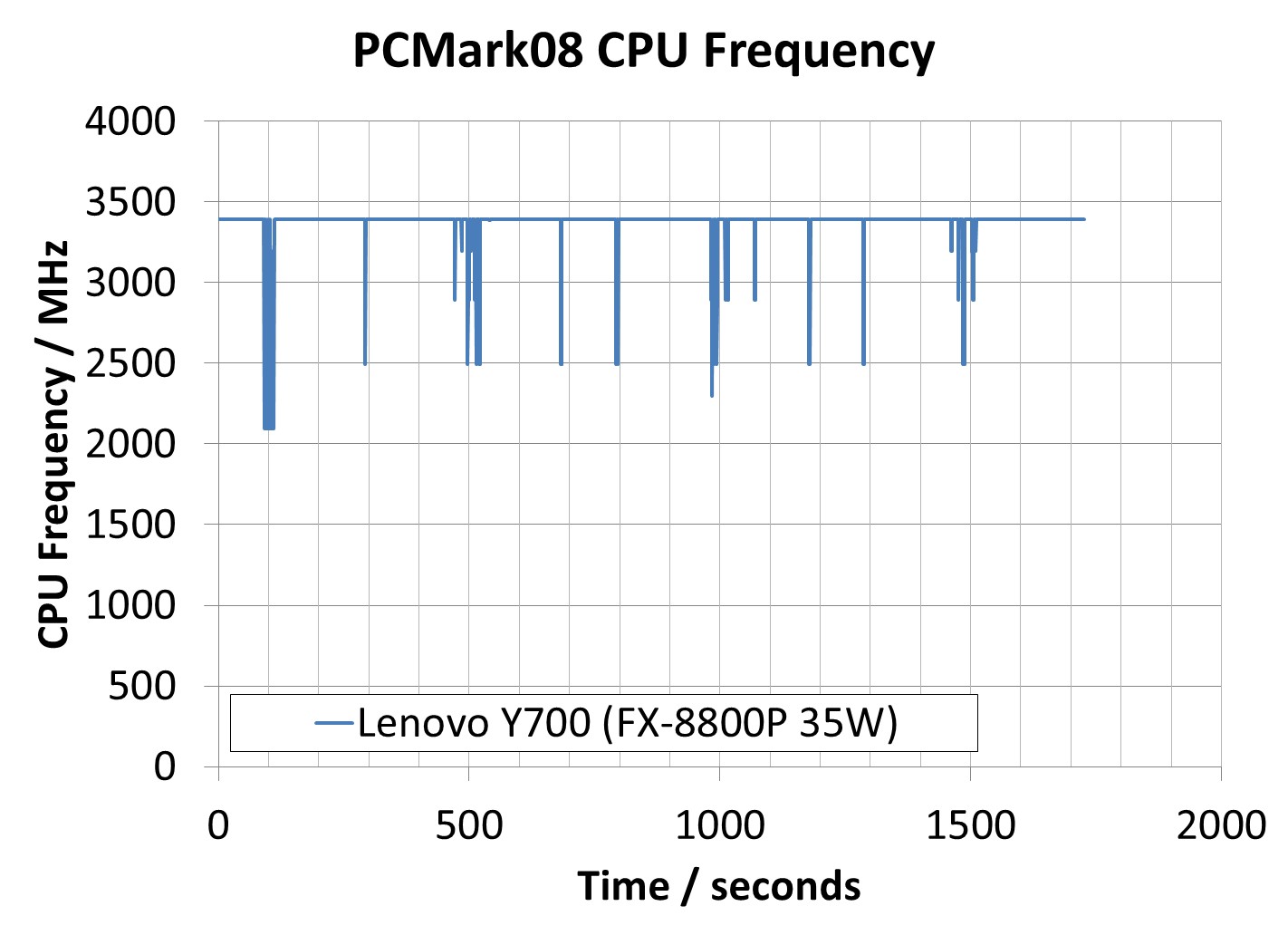
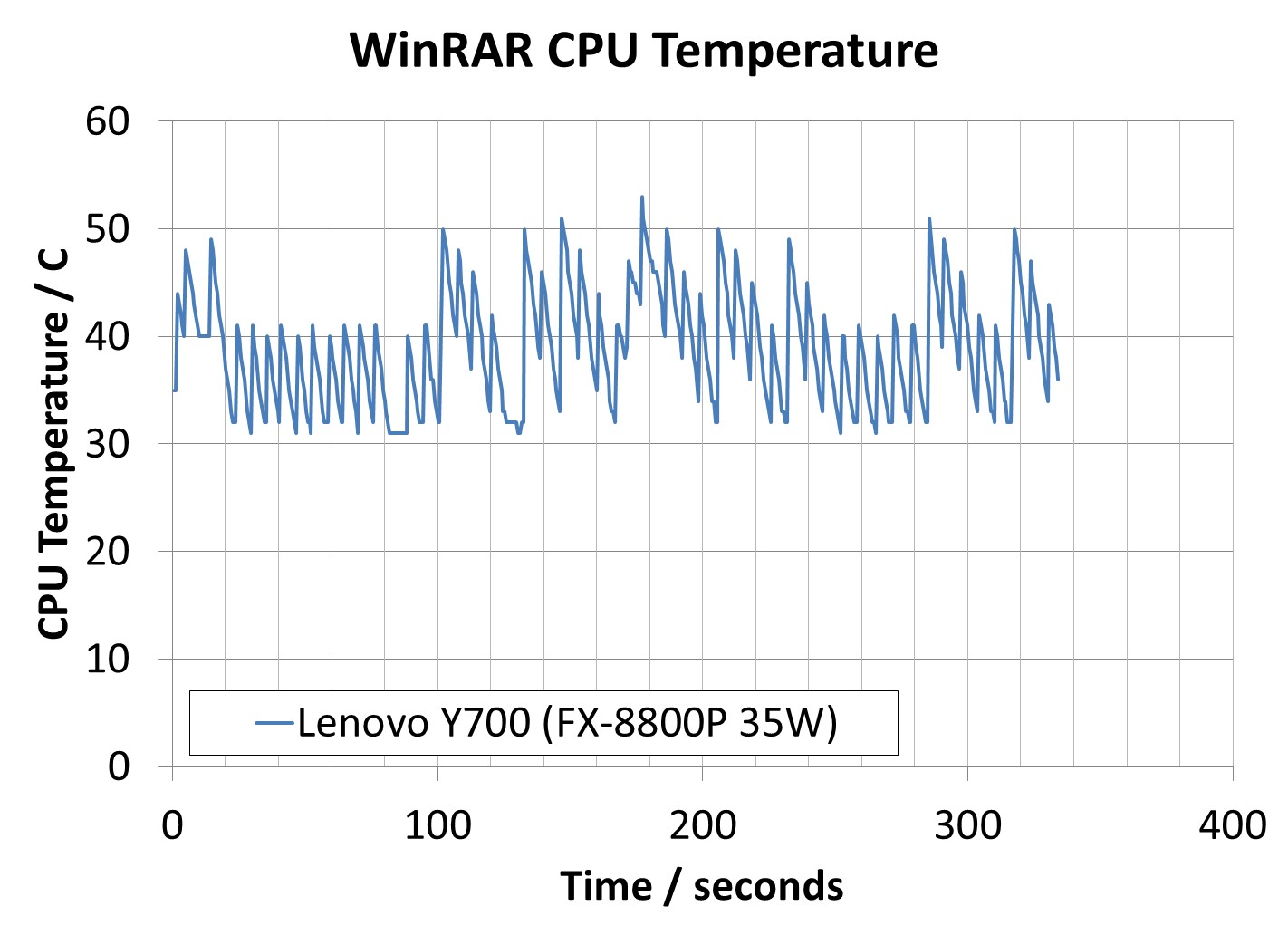
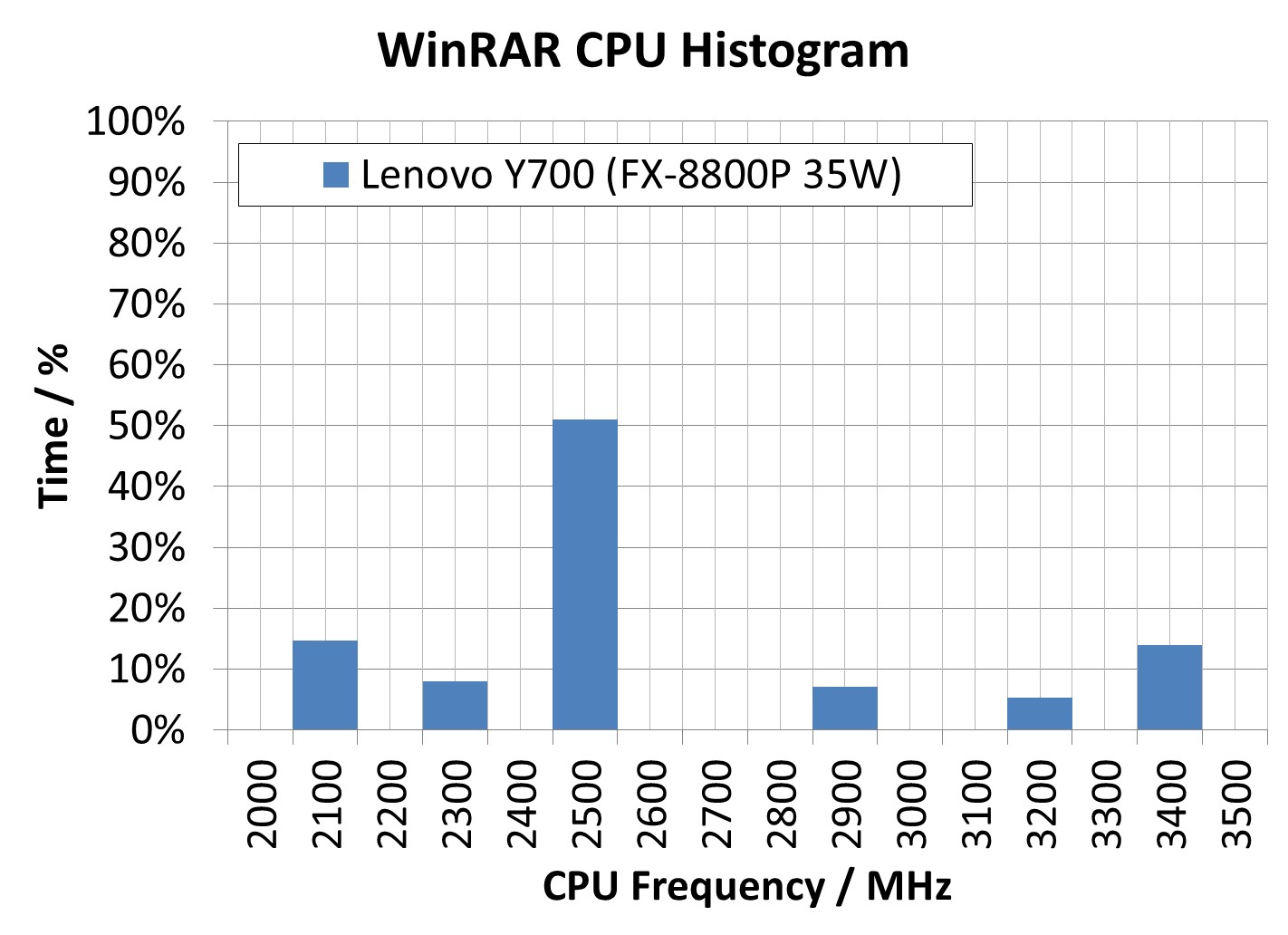








175 Comments
View All Comments
Danvelopment - Monday, February 8, 2016 - link
Strategy AMD should adopt:90% of people don't notice a performance difference above 3000 Super CPU Points, Intel CPUs are usually 4000-8000 Super CPU points, our chips may only range from 3500-4500 Super CPU Points but regular users won't actually notice it, and at the same performance marks we're a hundred dollars cheaper. Make the sensible choice.
Another way, we've done extensive testing to see what end users want and need, then we targeted those sectors, and where we matched Intel we made sure we were a hundred bucks cheaper on the same devices.
"We don't hold the performance crown but the price/performance crown"
Marcelo Viana - Monday, February 8, 2016 - link
Dammit, the solution should be simple, but must come from AMD, since can't expect it from oem's and all of them offer let's say 2011 sockets as example, why amd do not develop a socket switch, so a small board with 2011 pins on the bottom and a circuit on this boad to give a whatever socket amd choose connections on top of it, in order to accept amd chips.But AMD must understand that the memory on their chips must be ddr4(Carrizo do), because the lazy OEMs whon't change memory sockets, as example.
In this case the lazy ones have only to change the chip, and even better if any consumer have a old machine can upgrade to a chip that they choose. simple as that.
Anyone that sales more creates the standard on the market, the others is that must follow.
So who control the user experience? I think no one. everyone in the process just looking to explore the users in order to get money nothing more, but if i have to guess, problably the users. Because they are the one that really have the power to say "i won't buy it or that' or even better "until they give to me what i want" just my 2 cents.
farmergann - Tuesday, February 9, 2016 - link
Seems like you missed out on some highlights of the Y700. The memory is dual channel, the IPS screen has Freesync, and the sound is surprisingly awesome. Replaced the HDD with a Samsung 850 Pro and have thoroughly enjoyed it since.bitech - Tuesday, February 9, 2016 - link
Lol have they never seen a 17" laptop before? The HP Pavilion has a 1600x900 because it's 17". 1600x900 is the minimum resolution on all 17" laptops, not 1366x768.UtilityMax - Wednesday, February 10, 2016 - link
1600x900 is still a crappy resolution for such a large screen. I had a notebook with 15.5 inch 900p screen, and it was visibly grainy.mosu - Tuesday, February 9, 2016 - link
Just few words: Sabotage and corruption at high level OEM decision level. Simple as that.Arief Sujadmika - Wednesday, February 10, 2016 - link
AMD just need a feature to turn off the chips if its detect single channel memory for Carrizo then the OEM will make dual channel memory for it...thatthing - Wednesday, February 10, 2016 - link
the y700 r9 385x is a bonaire gpu, amd has no 512sp chips mobile r9 series, http://www.amd.com/en-us/products/graphics/noteboo...silverblue - Wednesday, February 10, 2016 - link
Articles like these make me want to see how good the unrestricted Athlon X4 845 will be, however as it's probably defective Carrizo silicon, I wouldn't expect it to be massively frugal. I do wonder if there will be any Bristol Ridge Athlons; the top models are rated with a cTDP of 25-45W which is a decent improvement and would reduce/eliminate throttling. Overclocking may not help in terms of power but performance would be more consistent. You also get DDR4 which isn't as big a help for the Athlons but it would be interesting to see the difference.A review of the Dell Inspiron I3656-7800BLK would be a good marker, if only to show the maximum performance of the mobile chips.
Masospaghetti - Wednesday, February 10, 2016 - link
Seems like the best configuration of a Carrizo machine would be a 35w TDP A12 with dual channel memory and integrated graphics (or discrete graphics with crossfire enabled).It's a shame that all of the machines available are severely compromised with either single channel memory, 15w TDP, lack of crossfire, or a combination of these. Seriously. The machines tested have terrible designs. Looks like AMD made a huge mistake providing a common configuration with Carrizo-L with the single channel memory.